HiFiMAN HE1000se planar magnetic headphones
+ Superb top-to-bottom cohesive sound, amazing extension from deep bass to the highest highs; great transparency and airiness, detail retrieval only bettered by the best electrostatics; lovely luxury finish, CNC milled frame, leather bands and ear cushions; good connecting hardware – 3.5mm, quarter-inch jack and balanced XLR cables included.
– Requires very good partnering electronics – headphone amps of the highest calibre – to extract the best from these superb transducers.
Sound: 9/10
Value: 7/10
HiFiMAN has been a vanguard of high-end headphones since 2007, the brainchild of Dr Fang Bian. This relatively new brand has gone from strength to strength, taking already very impressive debut products to the very definition of high end, with a premium luxury finish on all its products befitting their market position. But it isn’t just about looks – HiFiMAN has pioneered and pushed innovation in the high-end headphone space, both with planar magnetics as well as electrostatics.
At the top of the range, HiFiMAN has made its mark with the Shangri-La Electrostatic headphones, powered by an exotic output transformer-less valve amplifier, with equally exotic 300Bs as the power output valve. That engineering tour de force is priced at US$50,000 – truly a statement, if there ever was one.
That said, HiFiMAN has made its name with much more prosaic products, with the HE400 planar magnetic series being its vanguard at much more affordable price points. The HE1000 series represents, therefore, its luxury line, and was the top-of-the-line planar magnetic before the advent of the Susvara at the US$6,000 price point.
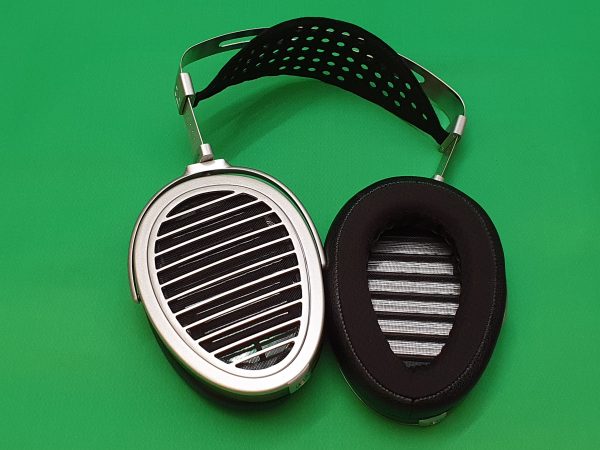
The HE1000se represents the third iteration of the original HE1000, which has been tweaked as the v2 and now the “se” – this version features higher flux neodymium magnets and comes in at US$3,500, not a small sum. However, these luxury headphones do look the part, with a very fine finish on the metal, wood and leather components and a reassuring heft to them (at 440g), but once on your head, the headphones do not present an undue load or excessive clamping force.
The headphones come in a lovely leather finished box and are also supplied with high-end cables terminated with balanced XLR, unbalanced quarter-inch jack and a shorter 3.5mm stereo minijack suitable for use with phones and DAPs.
The size of the ear cavities should suit almost all ear shapes and sizes, and comfort was well preserved over long listening sessions – I did not feel any build-up of heat or discomfort, which I have felt with some other over-ear headphones.
Being open-back and very much so, there is absolutely no sound isolation from the outside – these have to be used in a quiet and isolated situation. The size of the drivers also make it very leaky – the sound from these headphones will be easily audible by anyone else in an average-sized quiet room.
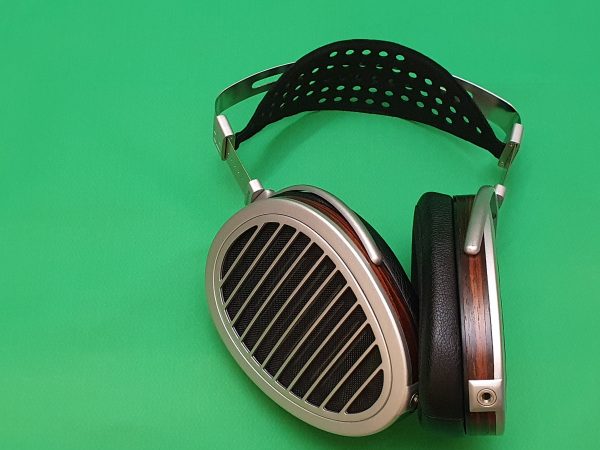
TESTING
Testing was done with these sources, as I have found that the source quality is often very crucial for high-end headphones:
- Chord Mojo/Poly combination, driven by Roon as a Roon endpoint.
- Chord Hugo2 connected to a Lumin U1 Mini as a Roon endpoint.
- Mytek Brooklyn DAC+ driven via USB from a Sonore Microrendu as a Roon endpoint in balanced operation.
- Astell&Kern Kann DAP.
- Astell&Kern 380 Copper Edition DAP.
- Onkyo DP-CMX1 DAP/Phone.
- Creative Technologies Super XFi USB headphone amp/dac driven by a Huawei P30 Pro smartphone running the TIDAL app.
- Apple Lightning to 3.5mm dongle.
I compared these headphones to my own Grado GH-1, Oppo PM-2 and Focal Elex.
LISTENING
Starting out with my standard repertoire of test tracks driven by my Astell&Kern Kann DAP, I dove into Macy Gray’s Stripped (HDTracks 24/96 FLAC) – the Chesky Binaural+ recording is one of the best I find to test how well the headphones image and project a “out of the head” soundfield. I was not disappointed – the evenness and fine grained tonality of the HE1000se painted a large and believable soundfield, showing the expected ambience and cue retrieval which places the musicians solidly in front of you and to the left and right. There was also a good sense of “height” cues from the recorded acoustic. Fascinated by this effect, I would further explore this with Dolby Atmos and Reality Audio 360 tracks now available on TIDAL on its Android App.
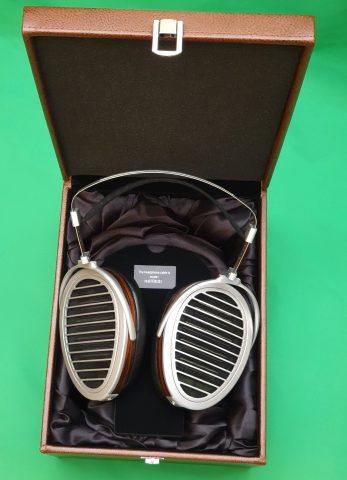
Using a Huawei P30Pro as a conduit to the Creative Technologies Super XFi USB dac/amp (in straight through mode), I sampled some of the albums which I know well in their stereo/mono or three-channel forms. Miles Davis’ Kind of Blue was first up in 360 Reality Audio mix on TIDAL – and it also did not disappoint. There was a clear sense of the instruments and players outside your head – and also a sense of height as well. Kudos to the engineers who have remixed this seminal album to great effect. I also tried some of the Dolby Atmos mixes – this time Art Blakey and the Jazz Messengers’ seminal album Moanin’ – again the HE1000se was able to portray the admittedly artificial Atmos Mix in a very enjoyable way, projecting the mix out of your head.
To round out this investigation, I also tried out Creative Technologies Super XFi technology (built into the dac/amp) which promises to remove the “in head” headphone experience. I have experimented with this for over a year now with various headphones and have had varied success as it is dependent on mapping your ear and head shape as well as the characteristics of the headphone/IEM in use. I have had best success with Shure 846 IEMs as well as my resident Grado GH-1s. For this experiment, I used the HE1000se with a similar HiFiMAN HE400i profile (in the configuration app for the dac/amp). The HE1000se acquitted themselves well – the even-handed aural profile, with detailed timbral textures made for a believable “out of head” sound field on a variety of material, though I have to point out that this works best with material which is recorded relatively “dry” and does not have too much of its own ambient acoustic information in the mix.
Switching to the Mytek Brooklyn DAC+, I tested the HE1000se in balanced mode. The general aural profile remains, but there is a small but perceptible increase in dynamics and punch over a single-ended connection, but these headphones are perfectly excellent even with a single ended connection. This is most true when paired with the two Chord DAC/Amps I own. Starting with the Mojo/Poly combo as a Roon endpoint, the verve and energy of the Chord Electronics DACs coupled with their detail retrieval and timing made the HE1000se sing – I ran through a number of albums, enjoying each and every track. Most notable were the lovely timbral textures present in Bags & Trane (Quad DSD Download) – John Coltrane’s saxophone soars with the lovely percussive sounds of Milt Jackson’s vibraphone as a counterpoint.
Switching to the Chord Hugo2 driven from a Lumin U1 Mini was even more of the same – more detail, even more precise timing and sounstaging whilst never losing musicality. The additional drive from the single-ended quarter-inch jack made for an even more dynamic sound, more so than even in balanced operation with the Mytek Brooklyn DAC+ – testament to the fact that balanced isn’t always best. On the track Noise in the Attic from the album Like Someone in Love, Art Blakey and The Jazz Messengers (TIDAL 44/16 FLAC stream), the opening drum solo is electric – the cymbal textures are fantastic with the hi-hat shimmering beautifully “overhead”.
Although they sounded perfectly fine with the Onkyo Phone/DAP and even with the Astell&Kern 380 (Copper edition), there was definitely a slight lack of energy and verve when driven from these otherwise excellent DAPs – the best match for me was with the Chord DACs, with the Mytek Brooklyn DAC+ a close third.
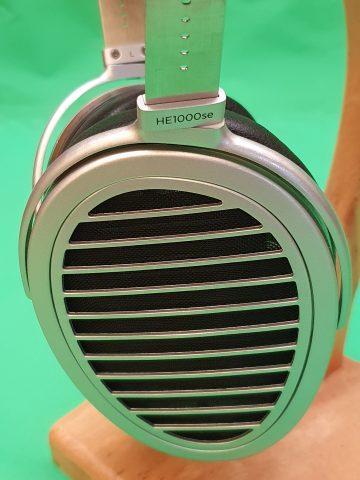
I also auditioned the headphones briefly using the humblest of DACs – the Apple Lightning to 3.5mm adapter that retails for US$9. Due in no small part to the higher flux magnets, the sensitivity of the headphones means that even this DAC can drive the HE1000se to acceptable levels and even sound reasonable. However, these headphones do need an amp with good dynamic grip to show them off to their best.
COMPARISONS
vs Oppo PM-2
The Oppo PM-2s share in the same quality that you get from many planar magnetics – this seamless top-to-bottom sound. But these are cut from different cloth and are in a different price category. The PM-2s offer a warm and enveloping sound, the proverbial comfortable pair of jeans (and in fact, they come in a denim carrying case – to extend the fabric analogy). There is detail and resolution, but the warmness is the overriding characteristic.
The HE1000se is in another class. The transparency and ability to “hear through” the soundfield is world class – and much more even in its voicing, with less warmth (though it could never be accused of being cool). Another marked difference is its ability to render bass textures. The best example was the detail and resonance rendered on Charlie Haden’s plucked double bass on the album Heartplay with Antonio Forcione (24/192 FLAC HDTracks).
vs Focal Elex
The Focal Elexes make a good counterpoint to the HE1000se – a more forward and brighter presentation (though not quite as forward as the Grados, read on below). The key difference is how the soundstage is painted. The HE1000se paint a much larger canvas, with much more obvious height and depth cues. Dimensionality is more apparent and more “out of your head”.
Again, the top-to-bottom cohesion from the planar magnetics is apparent and much smoother, without sacrificing detail. The Elexes also present a lot of detail, but in a more “etched” fashion. Which you prefer is a matter of taste.
vs Grado GH-1
And now for something completely different. Grados have always trod a different path from many other headphone brands and this is very evident – the very airy and brightly lit aural signature of the GH-1s retrieves a lot of “air” and ambiance cues, even more so than the HE1000se, which is no slouch in this regard. The forwardness of the midrange on the Grados is also very evident, which makes the HiFiMAN pair seem a little more recessed.
Where the HE1000se has an edge is the overall cohesion and the ability to make poorly recorded tracks sound “okay” – which is to say listenable, even if you are able to hear the issues in the production.
THE LAST WORD
Although this isn’t HiFiMAN’s top-of-the-line headphones, its performance would put the flagship product of many other manufacturers to shame. As with all things head-fi, your mileage may vary. I have found that this field is often a matter of personal choice. Undoubtedly, this product showcases some of the very best aspects of planar magnetic headphone technology and for many, it will be their ultimate pair of headphones.
If you are in the market for a pair of headphones for use at home in a quiet listening area in the budget of US$3000-4000 – these are a must audition. But you must also have a solid headphone amp or DAP with good dynamic grip and drive to get the best out of these stellar performers.
Gear
Sources: Roon Core to Chord electronics Poly/Mojo DAC Amp; Chord Electronics Hugo2; Astell & Kern Kann; Astell & Kern 380 Copper Edition; Onkyo Granbeat DP-CMX1; Apple iPhone 11 Pro Max with Lightning audio adaptor; Mytek Brooklyn DAC+ Headphone amp/DAC; Creative Technologies Super XFi Headphone DAC/Amp.
Price: US$3,500
Malaysian price: RM14,500
Malaysian distributor: STARS PICKER AUDIO LIBRARY (+603-6156 1984) / Find your distributor.
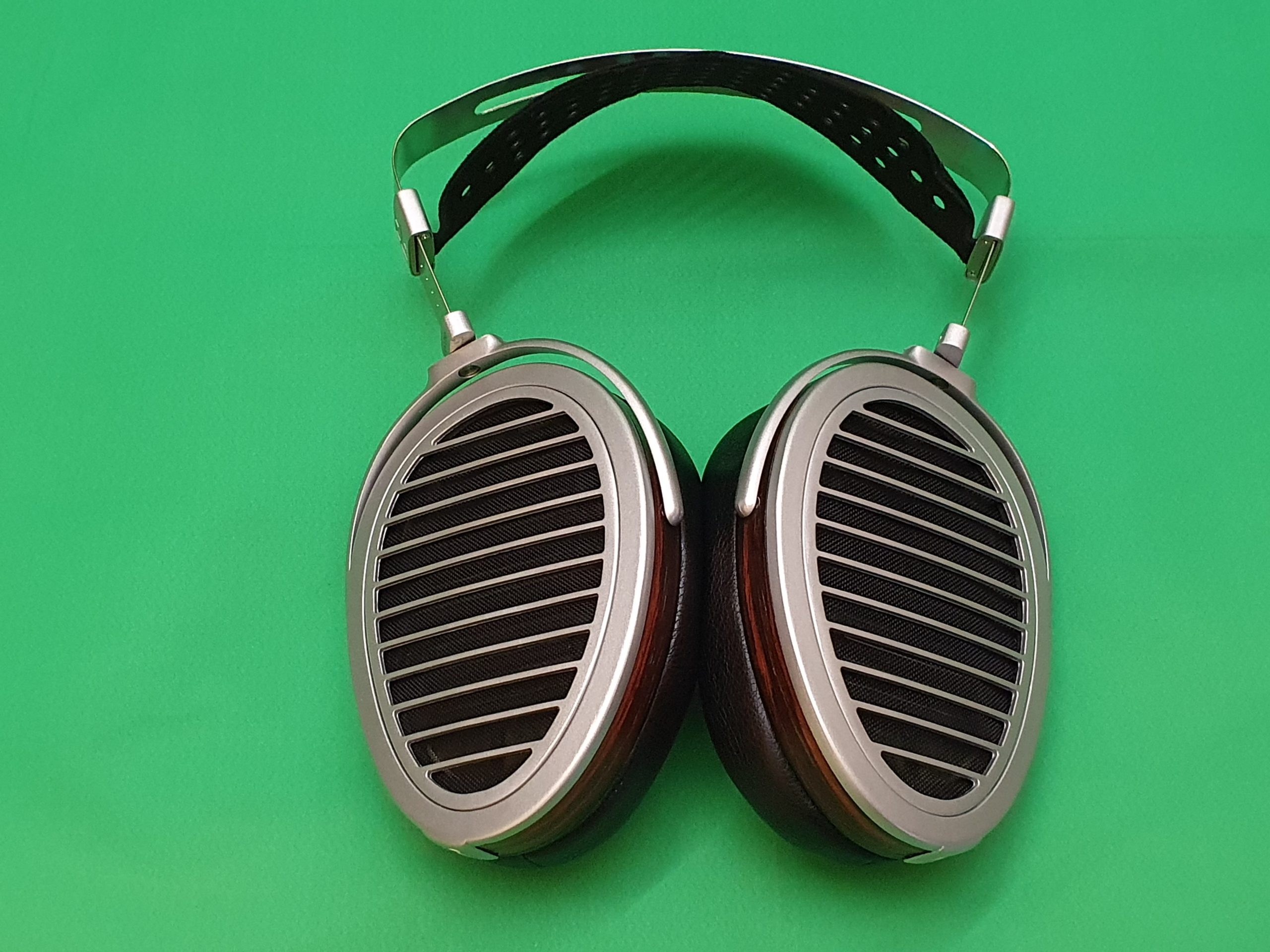





Great review Johan.
I first played with the headphone a bit when it debuted at Rocky Mountain Audio Fest late last year, and I was impressed with what I heard.
Regards
James